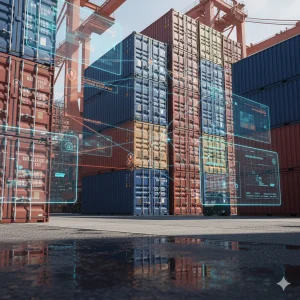The modern marketplace economy thrives on scale. Whether you’re managing a global e-commerce platform, a fintech seller hub, or a digital services exchange, growth brings more sellers and more risk.
Screening and monitoring a handful of merchants is one thing. Doing it across tens of thousands of sellers spanning multiple countries, currencies, and risk categories? That’s where things break?
At this level, compliance isn’t just a legal obligation; it’s an operational survival tool. Because if you are not systematically screening sellers for fraud, sanctions, or shell ownership, regulators will be the ones flagging it. And by then, it’ll be too late.
Why Seller Screening is a Compliance Minefield
Seller onboarding is more than a KYC checkbox; it’s a layered compliance risk that includes:
- Business verification
- Ownership structure analysis
- Geography and regulatory exposure
- Potential ties to financial crime or sanctioned entities
Unlike retail users, sellers can be legal entities with complex backgrounds. Some may operate in jurisdictions with loose AML controls. Others may use marketplaces to hide the movement of illicit goods or funds.
Adding to the challenge is regulatory expectation. Authorities now expect marketplaces to “know their sellers” just as well as banks know their customers. And they’re backing that expectation with billion-dollar fines and licensing threats.
The Volume vs. Accuracy Tradeoff
High-growth platforms often find themselves stuck between two bad options:
- Option A: Apply light checks to move fast, but risk onboarding shell companies or bad actors.
- Option B: Apply exhaustive checks, but introduce delays, drop-offs, and seller frustration.
The ideal approach avoids this binary. You need systems that can:
- Pre-screen sellers using intelligent automation
- Prioritize high-risk cases for deeper review
- Reduce false positives that eat up compliance team bandwidth
Scaling this kind of nuanced approach requires a tech-first strategy; one that treats compliance not as a hurdle, but as a built-in part of platform design.
Dynamic Risk Scoring: Adapting to Change in Real-Time
A seller’s risk isn’t fixed at the point of onboarding. It evolves.
For example:
- A previously clean seller might be sanctioned six months later
- Their jurisdiction might fall under a new AML scrutiny
- New negative news might reveal links to corruption or tax fraud
That’s why marketplaces need dynamic, real-time risk scoring. This involves continuously updating a seller’s profile based on:
- Sanctions and watchlist feeds
- Adverse media alerts
- Jurisdictional risk changes
- Behavioral anomalies in transaction or platform usage
Static, annual reviews won’t cut it. Platforms that want to stay ahead of regulators must adopt risk models that move as fast as their users.
Integrating Compliance Without Killing UX
One of the most common pushbacks from product teams? “Compliance slows things down.”
The truth is that “bad compliance implementation” does.
With the right tools, seller onboarding and monitoring can happen quietly in the background, with minimal disruption. Key principles include:
- Embedded ID and KYB checks directly with the signup flows
- Real-time API checks instead of batch file reviews
- Tiered onboarding that adapts checks based on seller size, geography, and risk
- Invisible monitoring post-onboarding
When compliance is seamless, sellers don’t notice it, and that’s exactly the point.
Beyond Onboarding: Continuous Seller Monitoring
Seller due diligence doesn’t stop once they’re onboarded. If anything, it starts there.
Regulators increasingly expect marketplaces to monitor the ongoing risk, not just upfront vetting. That means watching for:
- Changes in beneficial ownership
- Sudden spike in volumes or geographies
- Emerging media reports or new sanctions
- Risky transaction behavior patterns
Continuous monitoring helps spot red flags early, before they turn into enforcement actions or PR disasters. And it enables the platforms to take preemptive action, like suspending payouts, requesting re-verification, or triggering alerts to compliance teams.
How IDYC360 Helps Marketplaces Stay Compliant
IDYC360’s intelligent AI-powered platform was designed for exactly this challenge: helping fast-moving platforms stay fully compliant without slowing down operations.
Here’s how we solve the seller screening problem, at scale:
Global KYC & Identity Intelligence
Instantly verify businesses, UBOs, and individual sellers across 200+ jurisdictions with deep corporate records, official registries, and global watchlists.
Real-Time Sanctions & Adverse Media Monitoring
Stay ahead of regulatory risk with continuous monitoring across OFAC, EU, UN, and thousands of media sources. Get instant alerts when a seller’s profile changes.
Dynamic Risk Scoring Engine
Get context-aware scores that adjust automatically based on new data, so you know which sellers need escalation and which can move ahead.
Seamless API Integration
Plug IDYC360 directly into your onboarding flows, dashboards, or payroll systems. Frictionless for sellers, powerful for compliance teams.
Configuration Workflows
Set rules based on geography, product category, business type, or custom flags, so your compliance approach stays aligned with your risk appetite.
IDYC360 helps marketplaces focus on growth, while we handle the compliance complexity underneath.
Final Thoughts
In the marketplace economy, compliance isn’t optional; it’s foundational. Platforms that invest in smart seller screening not only reduce risk but also gain a trust advantage. Buyers feel safer. Partners take you seriously. Regulators stay off your back.
The right compliance infrastructure doesn’t just protect your platform; it powers your ability to grow confidently in any market.
Ready to Stay
Compliant—Without Slowing Down?
Move at crypto speed without losing sight of your regulatory obligations.
With IDYC360, you can scale securely, onboard instantly, and monitor risk in real time—without the friction.











